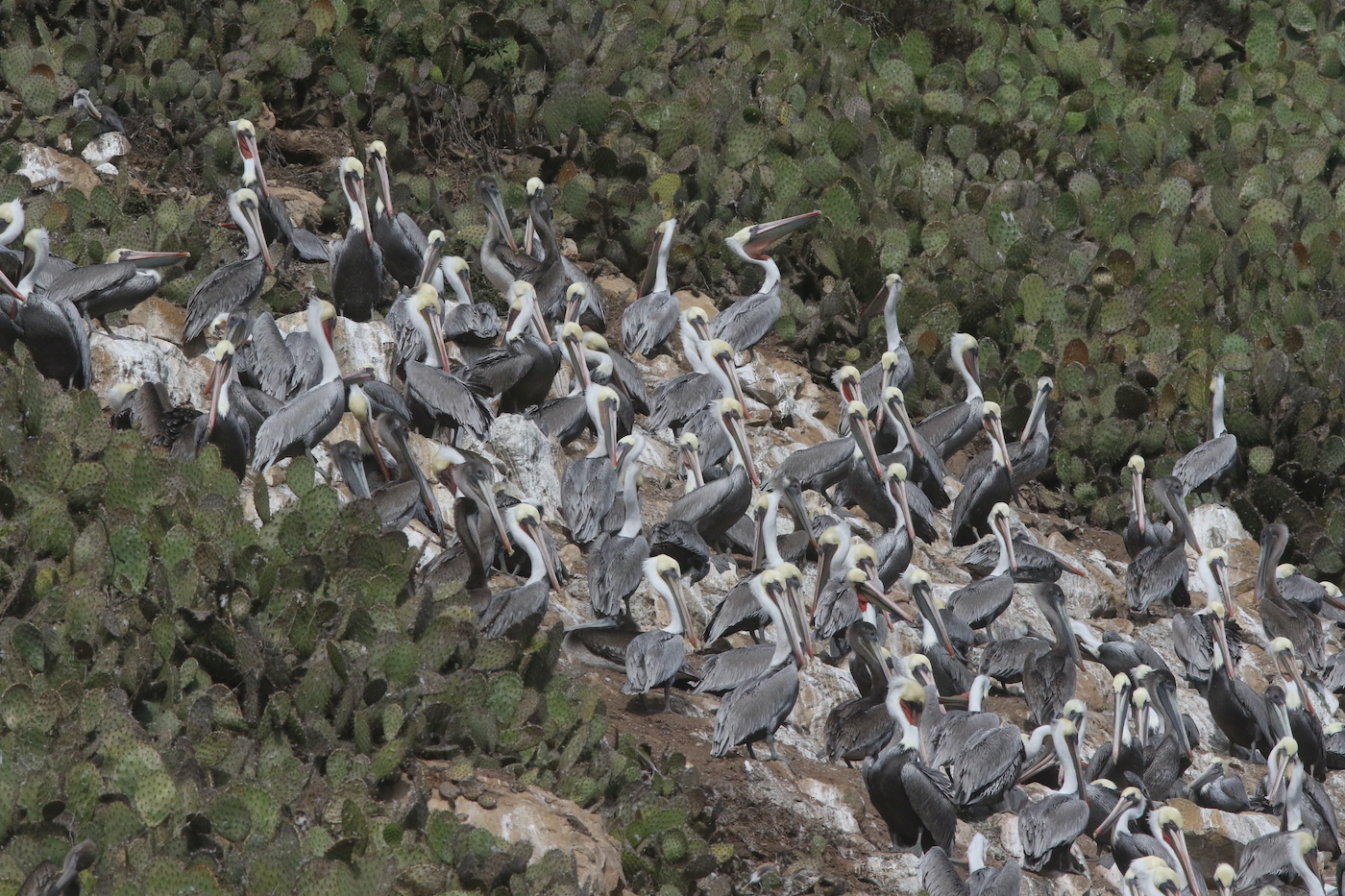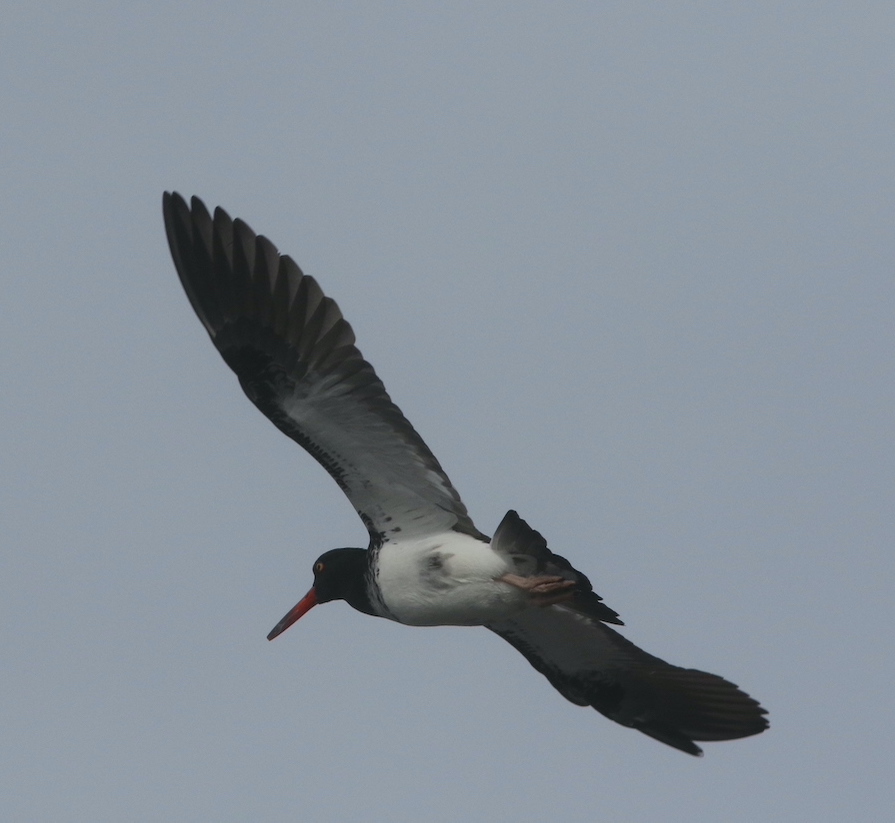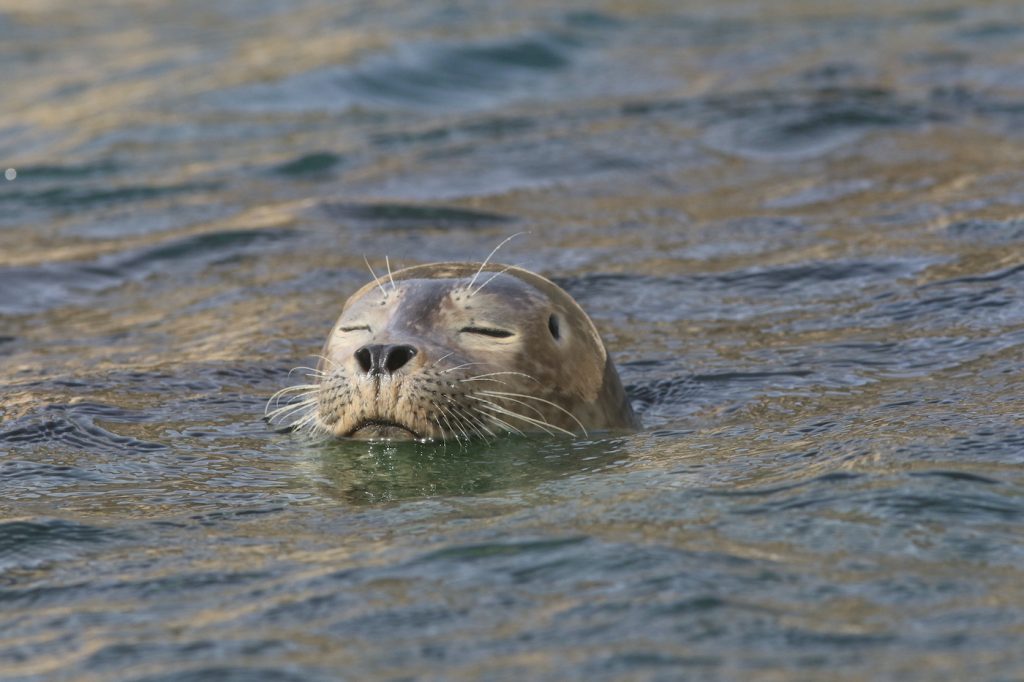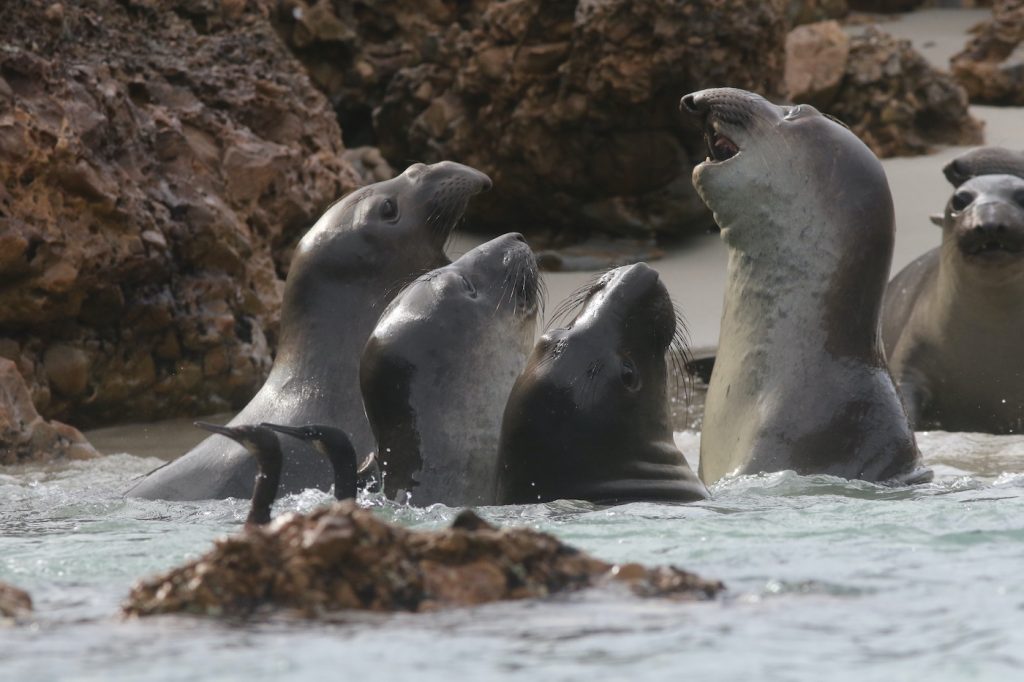Lots of Hugging

We hugged the crumbly west cliff face of Cuyler Harbor on San Miguel Island with no expectations from the seat of our kayaks.
From afar, we couldn’t see any wildlife, but we could clearly hear first-year northern elephant seals snorting and bellowing on distant pocket beaches concealed along the rocky shoreline.
I was paddling with four guides I work with at Scorpion Anchorage on Santa Cruz Island. However, while kayaking San Miguel Island, Santa Cruz felt faraway – although it was only two days’ worth of paddling to that easterly location.
You Have to Go to Know
The morning sun warmed our backs as we paddled west inside idyllic Cuyler Harbor, those sheer cliffs seemingly barren, yet golden at sunrise. As we drew closer, the first signs of life came into view through my Canon 300mm lens. It was a mating pair of migrating surf scoters.

Migrating down from the frigid waters of Alaska, they are a challenge to detect from a kayak while sitting low on the water especially in choppy seas, but the males have some bright orange on their bills. It stands out amongst their black feathers and those dark cobalt blue open ocean waters. The females on the other hand are rather dull to look at.
There’s a row of craggy nooks and crannies beneath that east-facing cliff, and each one was mostly occupied with those bulbous, teary-eyed, year-old northern elephant seals. They were not alone though. A super playful California sea lion pup porpoised alongside my kayak, while a lone harbor seal pup ignored its rambunctious advances and appeared sleepy at the surface. Also weaving in between the pinnipeds were a pair of western grebes. The only noise came from the wave-battered rocks where a small cluster of black oystercatchers stood watch over Cuyler Harbor.
Breaking away from Cuyler Harbor, the five of us paddled eastward to Prince Island, only a half-mile offshore. Prince Island is an important seabird site where 14 pelagic species breed and nest to rear their young.
It wasn’t nesting season in October, but several species were roosting in profusion, especially massive squadrons of California brown pelicans on the east end of Prince Island. It was the greatest congregation of brown pelicans that I could remember. Most of them were mature birds, their brilliant coloring in stark contrast to the arid, cactus-covered eastern fringe of Prince Island.
Challenge Point
The steep berm of a beach at Challenge Point protrudes eastward toward the San Miguel Passage and three miles across to Sandy Point on the northwest tip of Santa Rosa Island. Between Cuyler Harbor and Challenge Point are daunting, Mordor-like cliffs known as Eagle Cliffs. Curious harbor seals, raucous sea lions, and wallowing elephant seals all haul out here, basking in the warm sand as surf thunders away in the backdrop.
Paddling east of there, we dodged small breaking waves where narrow slivers of beaches were tucked away. A couple were accessible with the incoming tide. That allowed for an approach to one of the best wildlife microcosms I’ve ever experienced on San Miguel Island.


A small flock of black oystercatchers huddled on the volcanic crags, shifting their positions as breaking waves crashed around them. However, from the seat of my blue kayak I noticed a couple that were different from the jet black, year-round shorebirds. Every now and then, American oystercatchers mingle with the black ones. The American oystercatcher has a white breast and underbelly, and every so often, the two species will mate and create a hybrid.
Gradually paddling in closer to that busy, hidden beach that was maybe 10 feet wide, I found a small group of black turnstones adjacent from the oystercatchers. They barely budged in the volcanic crags, as they soaked in the mid-morning sun. The black and white shorebirds are migratory, and enjoy the rocky enclaves protected from the surf and northwest winds.
And then along the shoreline, periscope-like Brandt’s cormorants huddled closely in the shallows. Just behind them was the most entertainment. First-year northern elephants seals jostled playfully in king-of-the-mountain mode. Sparring amongst themselves, they reared up out of the water and hammered away at each other. They were several years away from becoming dominant bulls on these distant isles, but they thoroughly disrupted the pelagic birds patrolling the pocket cove. Scattering them in all directions, some of those snake-like seabirds darted beneath my kayak.
We took that as our cue to paddle on. Challenge Point beckoned to the east, its pearly white, wind-groomed sands exposed to wind and swell out of the northwest and southeast. Those forces of nature have created an incredible beach where more pinnipeds and shorebirds abound. It was all we needed to keep our curiosity heightened, naturals wonders awaiting around every craggy corner of San Miguel Island.





